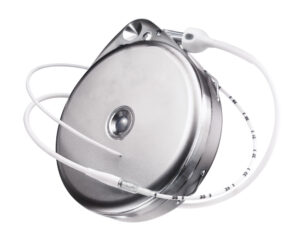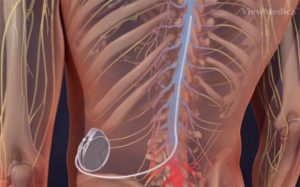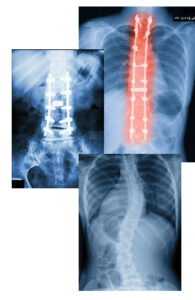What Is a Intrathecal Pain Pump?
Intrathecal pain pump delivery is a proven, safe, and effective therapy for managing chronic pain. Unlike oral medications that must circulate throughout the bloodstream, an intrathecal pain pump system delivery releases medication directly into the fluid surrounding your spinal cord, which may lead to fewer or more tolerable drug side effects.
Who Can Intrathecal Pain Pumps Help?
Pain Pump Therapy can be beneficial to people with: degenerative disc disease, neuropathy, sciatica, headaches from cervical pain, scoliosis, chronic pelvic and abdominal pain, radiculopathy, chronic back and neck pain, or have had failed back surgeries.
If you’ve had surgery in the past for back or neck pain that left you in chronic pain after the surgery, that the surgeon hasn’t been able to help with, a pain pump can help manage the pain.
About the Medication Delivery System
The intrathecal pain pump system consists of a pump and catheter, which are surgically placed under the skin. The pump is a round device, about the size of small tuna can, that stores and delivers pain medication, and it is placed in the abdomen, thigh, or buttocks. The catheter, a thin flexible tube, is inserted into the spine and connected to the pump. The pump sends the medication through the catheter to the spinal area. Pumps are refilled in office every 2-4 months when the pump is empty.
How It Works
The pump releases prescribed amounts of pain medication through the catheter directly to the fluid around the spinal cord, which is called the intrathecal space.
Many people experience significant improvements in their pain symptoms and quality of life after receiving an intrathecal drug delivery system. However, realistic expectations are essential to satisfaction with any pain treatment. Intrathecal medication delivery cannot eliminate the source of your pain or cure any underlying disease, but it may help you to better manage your pain.
Learn more about how the drug pump works on tamethepain.com.
The Intrathecal Drug Pump System includes:
- Programmable drug pump – A battery-powered device that stores and dispenses medicine according to instructions programmed by your doctor
- Catheter – A thin, flexible tube that delivers pain medication from the pump to the fluid around the spinal cord
- Physician programmer – A computer at your doctor’s office that lets your doctor tailor your therapy to best meet your needs
- Personal therapy manager – An optional handheld device that gives you more control over your pain by allowing you to receive an extra dose of morphine from your pump when needed and within physician-set limits
If a drug pump is an option for you, your doctor will work with you to select the pain treatment system that is most appropriate for your needs.

Benefits and Risks – Drug Pumps
For many people, drug delivery therapy has increased comfort and the relief of chronic pain so they can rejoin their lives. Some have been able to reduce or even eliminate oral/systemic pain medications. Drug delivery therapy may not take away all of your pain, but it may allow you to do things you haven’t done in a long time, like enjoy a movie from start to finish, keep pace with a friend on a walk, or spend more leisurely time away from home.
Benefits
Drug delivery therapy offers a number of potential benefits, including:
- Effective pain relief
- Reduced or eliminated use of pain medication
- Reduced side effects compared with oral medication
- Improved ability to function and participate in everyday activities
- High patient satisfaction
For answers to frequently asked questions about intrathecal pain pumps.
- Has been proven to be safe and effective when used as directed
- Does not involve permanent changes to the spinal cord or nerves
- Can be customized by varying the dosage to accommodate your needs at different times of the day/night or week
- Lets you try the therapy for a short period of time before committing to long-term therapy
- Is reversible—the therapy can be turned off, or if desired, it can be surgically removed
Risks
The implanted pump and catheter are surgically placed under the skin. Surgical complications are possible and include: infection, spinal fluid leak, and headache. You should not undergo the implant procedure if you have an active infection at the time scheduled for implant.
Once the infusion system is implanted, device complications may occur which may require surgery to resolve. Drug overdose or underdose can result because of these complications and have serious and even life-threatening adverse effects. Possible complications include the catheter or pump moving within the body or wearing through the skin. The catheter could leak, tear, kink, or become disconnected. The pump could stop because the battery has run out or because of failure of another part of the infusion system. Additionally, inflammatory masses have been reported at the tip of the catheter which may lead to complications, including paralysis.
See Important safety information for more details. Also, please discuss the benefits and risks of this therapy with your doctor.
Advantages Over Other Therapies
Drug delivery therapy offers advantages over other therapies for severe chronic pain:
- A screening test serves as a temporary evaluation period so you can see if drug delivery therapy relieves your pain before committing to long-term therapy
- It does not have to be a permanent procedure like back surgery. The system can be turned off or surgically removed if you do not like it or of you decide to pursue a different treatment
- Unlike oral medications, drug delivery therapy releases medication directly into the fluid surrounding your spinal cord rather than traveling throughout your body in your bloodstream. This may lead to fewer side effects, such as nausea and constipation
- Drug delivery therapy may provide relief when other treatments – like medications or injections – have not

References
- Deer T, Chapple I, Classen A, et al. Intrathecal drug delivery for treatment of chronic low back pain: report from the National Outcomes Registry for Low Back Pain. Pain Med. 2004;5:6–13.
- Duarte RV, Raphael JH, Sparkes E, Southall JL, LeMarchand K, Ashford RL. Long-term intrathecal drug administration for chronic nonmalignant pain. J Neurosurg Anesthesiol. 2012;24:63-70.
- Ellis DJ, Dissanayake S, McGuire D, et al. Continuous intrathecal infusion of ziconotide for treatment of chronic malignant and nonmalignant pain over 12 months: a prospective, open-label study.Neuromodulation. 2008;11:40-49.
- Hamza M, Doleys D, Wells M, et al. Prospective study of 3-year follow-up of lowdose intrathecal opioids in the management of chronic nonmalignant pain. Pain Med. 2012;13:1304-1313.
 Skip to content
Skip to content


